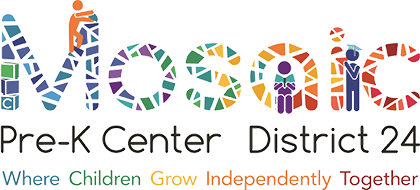Dual Language Program
Q412/Z097 is proud to be the first Mosaic Pre-K Center to offer a Dual Language Program!
A Dual Language program can be extremely beneficial for young learners. Early learners have an easier time learning a new language over teenagers and adults!
Learning two languages can:
- help children develop strong thinking skills
- help children gain new skills, and show better self-control
- help children maintain a strong bond with their family, culture, and community
- help children learn about other cultures
- help children have increased job opportunities as an adult
What is a Pre-K Dual Language program?
What are the target languages offered in pre-K Dual Language programs?
What does instruction look like in a Pre-K Dual Language classroom?
What are the Core Principles for supporting Emergent Multilingual Learners?
